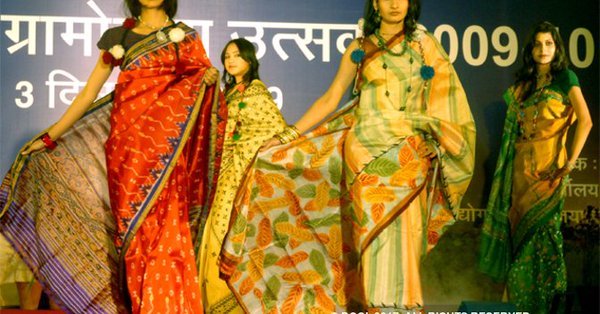The nine-yard beauty is something all Indian women adore. Sari is fun, sari is beautifully messy, saree is sexy and much more.

But when did sari become a symbol of Hindu nationalism? How is donning a traditional Indian attire aligned to promoting a certain religion? And just how is, say for instance, a Benarsi saree a marker of Hinduism?
Well, The New York Times certainly seems to think so. On November 12, NYT published an elaborate article: In India, Fashion Has Become a Nationalist Cause, finding a conspiracy in the humble saree and viewing it through a communal lens.
Basically, author Asgar Qadri claims that after BJP came into power in 2014, it has been deliberately reviving the textile industry and transforming the Indian fashion scene just to push its right-wing nationalism.
Sample a few lines from the article:
“Since the Bharatiya Janata Party formed a national government in 2014, the Indian fashion industry has been pressed to aggressively promote traditional attire and bypass Western styles. The effort aligns with the party’s broader political program: to project multi-faith India, a country of more than 1.3 billion, as a Hindu nation.”
The author then digresses completely and refers to murder of journalist Gauri Lankesh. He says that critics of PM Modi are “branded as “anti-national,” some shot and killed by Hindu nationalist activists.”
Well, is there any evidence of that, Mr Qadri? How can you conclusively state this without any proof?
Let us present a few other gems from the article:
“There is a clear connection between the rising Hindu nationalism and the aesthetic production of leading Indian fashion designers and the country’s luxury industry at large”
The article claims how Modi’s ‘Make in India’ campaign is just to restore Indian-ness in Indian fashion. Strangely, the article does acknowledge that the revival of the Varanasi sari is helping its weavers who are predominantly Muslims but insists that they continue to be poor while the merchants are making money.
Sample this:
“During his campaign, Mr. Modi had promised to revive the tradition of the Banarasi sari and to help its weavers, a significant percentage of the constituency’s electorate. The weavers, who are mostly Muslim and following a family trade, largely live in poverty…As soon as we reached what looked like a community center, about 50 men, old and young, gathered around. A few told their stories on behalf of the group: Nothing had changed for them…But Mr. Modi’s call to revive the Banarasi sari certainly has benefited the merchants in the city, who employ the weavers.”
There’s more:
”Mr. Modi has made traditional dress a priority and, as many in the country want to please him, the fashion industry has followed along.”
What’s wrong in designers promoting and experimenting with traditional Indian clothing styles? In fact, it will take our styles to global heights and at the same time benefit our weavers the most. Is that why the author is afraid that the Indian fabric is giving a tough competition to Western textile?
The author then conveniently states how Smriti Irani, the country’s textile minister is now in charge of Indianizing fashion, just because she wears sarees and how she was a soap opera star before.
The author curiously notes that “Ms. Irani’s saris have become popular fashion statements.” Well, really? When was the last time Irani’s dressing sense made it to the press?
There are no absolutely no facts presented by the author to substantiate his claims. The whole article just feels like a long rant devoid of a strong argument.
Indian women wear sari as a symbol of elegance and pride, not to flaunt their nationalism. We don’t need such markers, dear author.
Twitter lashed at the publication for such a poorly researched article and gave the author a piece of their mind:
,
.